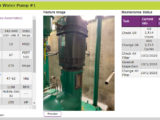The Truth About Cloud-Based Solution Security
Whenever a new technology enters the market, it’s common for potential users to feel cautious about its security. The same has happened with cloud-based solutions. However, potential users should feel reassured by the high security abilities of these solutions. The first step to feeling reassured is to understand the security technology and tactics used.
Everyone has heard the concerns about “the cloud” – including “can’t hackers access my data?”
However, accessing your information through a cloud-based solution, in many cases, is more secure than accessing your on-premise solutions directly. A collection of technology and tactics compose the security of a cloud-based solution. Although the cloud-based solution provider is responsible for implementing these elements, users should understand why they exist. Users should also understand why they are so important – even if they’re tired of typing verification codes to access their site.
You’re Already Part of the Cloud
If you already use the Internet to perform bank transactions, stream television shows and movies, and shop, you are already part of the cloud in your personal life. Your work email is already part of the cloud in your professional life. You have already decided to use the cloud at home and on the job and enjoy the benefits of it. So why shouldn’t your industrial system also benefit from a cloud-based solution?
Delivering vs. Connecting
As you may have read in our previous blog post, there are drastic differences between the two approaches to viewing your information that you receive from your industrial system. Delivering information to a cloud-based solution was one method listed under the more secure “Delivering Information” schemes. What sets it apart from other methods is its use of security requirements and other technological advancements.
Security Technology & Tactics
- MFA for each user device – This verifies the user logging in is who they say they are. Oftentimes, the user must type in a random code that is sent to another one of their devices.
- Individual user login – Each user has their own login information for auditing purposes.
- Geo-Replication – Cloud-based solutions often redundantly store your information in data centers across multiple locations in the world. This practice is recommended for data backup and integrity because your information is still available to you if one of these data centers encounters an issue.
- Strong password – It should be composed of a combination of uppercase and lowercase letters, numbers, and special characters. It should also be a minimum of eight characters, not be a common phrase, and not be the same password from other sites. In 2019, password managing app NordPass released the list of the 200 Most Popular Passwords leaked in data breaches that year. If you look at the graphic below, you can tell why these were not strong passwords. It’s clear why media outlets referred to the list as “The Worst Passwords of 2019.”

There are a lot of methods to get your username and password. As an example, one of the easiest methods, for someone to get these, is to walk by your desk, where they are written on a post-it, in plain sight. Another example is, signing into a site, that is not encrypted. These sites transmits your information in plain text which includes your username and password, making it possible to intercept. You should always use encryption to protect your information.
Although concerns about security in cloud-based solutions are common, learning helps potential users gain understanding and correct misconceptions. Then potential users are more willing to use cloud-based solutions.
About The Author
The President and founder of Data-Command with over 25+ years of business development, 35+ years of automation, and 40+ years of software development experience. In 2005, Data-Command was born from his passion to provide information to municipalities and industry that would have a positive impact on their operations, and he has never lost this passion.


